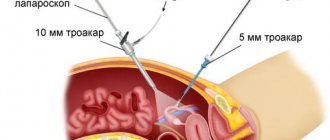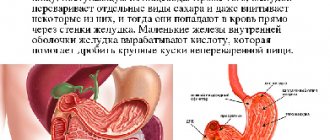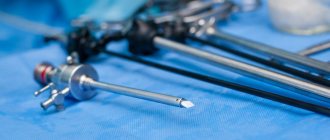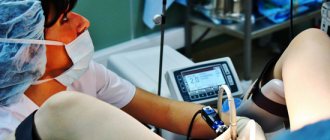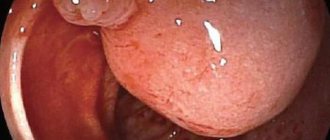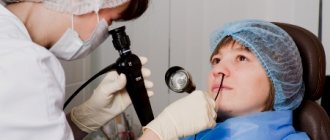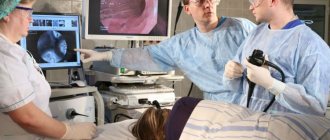Patients who are scheduled for cervical colposcopy worry not only about the procedure itself, but also about what awaits them after the diagnosis. Numerous forums are filled with rumors about various difficulties that await women: after colposcopy, the discharge does not stop, the menstrual cycle has shifted, inflammation has appeared - and many other stories, most of which have no reasonable basis.
This material will help to get an idea of what the patient can expect and what symptoms should cause alarm.
Discharge after colposcopy
Gynecologists explain that discharge after colposcopy should not cause alarm, especially in the first 2-3 days. No matter how minimally traumatic this intervention is, it inevitably causes a reaction of the mucous membranes: the glands that produce vaginal and endocervical secretions begin to function in an enhanced mode under any impact, therefore the volume of secretions increases.
Good to know! Even after sexual intercourse, the mucous membranes of the genital tract produce more mucus.
Normally, the discharge after the procedure is watery or mucous, without clots or inclusions, with a neutral or slightly “medicinal” odor. They may contain blood in the form of veins. Such bleeding is observed for no longer than 3 days.
When conducting extended colposcopy with biopsy within a few days after the examination, a different pattern of discharge is observed:
- in 2/3 of patients, a smear may occur, in which bloody transparent discharge with a watery structure predominates - a sign that the mucous membrane was injured during the collection of biopsy material;
- in patients who have undergone the Schiller test, there is some mucous brown discharge - iodine is present in normal discharge from the genital tract, which stained the cervix.
Normally, the described discharge stops after a few days, but when a biopsy is taken and cauterized, the cervical erosion bleeds for a maximum of 5-7 days.
As for pathological bleeding after colposcopy, it cannot be confused with typical discharge, since not blood-stained mucus is released from the genital tract, but full-fledged blood, as with normal menstrual bleeding. If she wets a sanitary pad in less than 2 hours, you should immediately consult a doctor or call an ambulance.
Features of the procedure
Colposcopy, despite this not very pleasant name, is a procedure in which a specialist examines the vaginal cavity and uterine walls using a special device - a colposcope. This is done for one purpose, to avoid the development of pathologies, in particular cervical erosion.
Women rarely visit a doctor on their own for a vaginal examination. Basically, you only have to visit a specialist when the gynecologist strongly recommends an examination. The key factor in the need for such a study is the gynecologist’s suspicion of the development of pathology.
Advice! Women need to visit the colposcopic examination room without a doctor's prescription once every 3 years. If there are suspicions or prerequisites for the development of pathologies, then this should be done more often - once every six months.
Pain and pulling sensations in the abdomen after the procedure
There is nothing dangerous in the fact that the patient’s lower abdomen hurts at the end of the examination. Even a routine examination in a gynecological chair can cause pain. In the case of diagnostic manipulations - biopsy, tests during extended colposcopy - the stomach may well hurt due to a spasm that occurs due to the impact of instruments and reagents on the cervix.
Another reason why the lower abdomen may hurt is injury to the mucous membranes during a biopsy. In this case, doctors warn that if the lower abdomen pulls for 1-3 days, and the nature of the pain resembles menstrual pain, this is normal and does not require calling an ambulance.
Helpful advice! To relieve pain and spasms, you can take No-Shpa or Drotaverine.
We can talk about pathology and complications if the stomach hurts for 3 or more days, and the discomfort is accompanied by an increase in temperature and increased discharge. You should also be concerned if antispasmodics do not reduce pain.
Types of research
There are two main types of manipulation:
- simple,
- extended.
A simple colposcopy involves examining the cervix under a microscope: visually assessing the discharge, the condition and size of the organ, the cervical canal, the border between the cylindrical and squamous epithelium, the transformation zone. With this method of observation, obvious disorders can be identified: hypertrophy, ectopia, polyps, condylomas, cysts.
Extended colposcopy involves the use of special solutions. Lugol's and acetic acid are most often used. With appropriate coloring, epithelial cells accumulate or do not allow secretion to pass through. Normally, the same tissue reaction to the solution is observed. When pathology appears, the accumulation of color changes, a vascular reaction appears, this makes it possible to identify the affected areas and the atypical structure of blood vessels. In addition to the procedure, it is recommended to perform a biopsy of suspicious lesions to clarify the diagnosis.
Can colposcopy cause burning and itching?
As a result of a standard examination, burning and itching are not a sign of normality, especially if atypical discharge is present: yellowish or greenish in color, with an unpleasant sour, fishy or putrid odor. However, most often such consequences are observed after an extensive examination, during which Lugol's solution was used. This reagent may irritate the delicate mucous membranes of the genital tract and external genitalia after removal from the vagina, causing an unpleasant itching sensation.
When is it necessary to consult a doctor:
- burning and itching does not stop for more than a week;
- discomfort is accompanied by redness and swelling of the external genitalia;
- abundant cloudy or white discharge with an unpleasant odor appears;
- There is acute pain when urinating.
A vaginal smear for microflora will help to find out the cause of the listed symptoms. Based on the test results, the doctor will prescribe therapy.
Vagina after childbirth
Photo before and after colporrhaphy Photo before and after colporrhaphy photo after surgical correction Photo before and after vaginal surgery Photo before and after colporrhaphy Photo before and after colporrhaphy
At the Center for Aesthetic Intimate Surgery, colporrhaphy is performed using modern methods and innovative equipment. This allows you to achieve a complete absence of scars after the intervention, as can be seen in the photo. It also reduces the risk of complications and facilitates the rehabilitation period.
The effect of colposcopy on menstruation
When carrying out diagnostics, this method does not affect the sex glands (ovaries), which are responsible for the regularity of menstruation, therefore, after the procedure, hormonal imbalances leading to a delay or early appearance of menstrual bleeding are excluded. However, some patients experience that their cycle shifts. There are reasons for these phenomena, and they are worth considering in more detail.
Can colposcopy provoke menstruation?
Gynecologists unanimously claim that colposcopy is not able to provoke menstruation. In most cases, bleeding that occurs on the first day after the procedure is a consequence of additional manipulations performed as part of the examination:
- taking a biopsy;
- “cauterization” of erosion;
- conization of the cervix.
If the wound surface is treated poorly with coagulators or the result of such manipulations may be bleeding. In intensity and pain, it is very similar to normal menstruation. This type of bleeding is not normal and requires treatment.
Can menstruation be late?
A delay in menstruation is possible, but the reason for its occurrence may have nothing to do with the procedure. Most often, a delay in menstruation is a consequence of stress, because most women are afraid of the procedure and also worry about its results. Pregnancy occurring in the middle of the cycle can also provoke disruption of the menstrual cycle.
Important! If menstruation is delayed by 7 days or more, it is first recommended to take a pregnancy test, and only then make an appointment with a gynecologist with complaints about the delay.
Types of operation
Currently, several types of vaginal plastic surgery are used:
- Anterior colporrhaphy – suturing and strengthening of the anterior vaginal vault, which borders the bladder and urethra.
- Colporrhaphy of the posterior wall adjacent to the rectum. Often complemented by plastic surgery of the perineal muscles.
- Lefort-Neugebauer median colporrhaphy is a combined version of the operation in which both walls of the vagina are excised and sutured. The indication for such intervention is severe vaginal prolapse with cervical prolapse in a woman past reproductive age.
Are there any restrictions after colposcopy?
After the procedure, the patient will learn from the gynecologist about what is possible and what is not possible after colposcopy. Until complete recovery and cessation of discharge, it is recommended to use sanitary pads. They should be changed after every trip to the toilet. To avoid complications, it is important to maintain intimate hygiene, wash yourself at least 2 times a day with warm water and soap.
To reduce discomfort, you can use NSAIDs or antispasmodics. It is important to remember that this should be done under the supervision of a doctor.
The standard list of prohibited actions includes the following restrictions:
- being in conditions with elevated temperatures - baths, saunas, beaches, open sunny places;
- water procedures - it is not advisable to visit the pool after colposcopy, take a bath, or swim in open water until complete recovery (at least a week);
- hygienic procedures - douching should not be done after colposcopy of the cervix for 7-10 days, and you should not use hygienic tampons;
- Sexual life - for 10 days after colposcopy you cannot even have protected sex.
Also, after colposcopy, you should not do cupping massage on the lumbar region, ride a bicycle or lift weights. All these activities cause blood flow to the pelvic organs and can cause bleeding.
Disorders after childbirth
Gaping of the genital cleft after childbirth
Gaping of the genital slit after childbirth
Against the background of these factors, the pelvic muscles weaken, the walls of the vagina are injured and scars form on them. Rough scar tissue reduces sensitivity and increases the lumen of the vaginal canal. This can lead to urinary incontinence and prolapse of the vaginal walls, which has a negative impact on the patient’s quality of life.
For example, you are very young, but after childbirth you have a slight prolapse of the posterior vaginal wall of the 1st degree, divergence of the pelvic floor muscles, the only complaints are problems in sex and aesthetic defects.
Uterine prolapse Prolapse of the posterior vaginal wall 2-3 tbsp. Prolapse of the posterior vaginal wall, stage 3. Prolapse of the anterior vaginal wall, stage 2.
Can the procedure cause negative consequences?
Various complications after colposcopy, if the doctor’s recommendations are followed, are extremely rare. The most common consequences of the procedure:
- exacerbation of thrush after colposcopy;
- inflammation of the cervix;
- reactive or allergic cystitis.
The main reasons for the occurrence of such complications are associated with poor personal hygiene and early onset of sexual relations after diagnosis.
A complication such as bleeding occurs due to overheating of the body, heavy lifting or rough sex. In extremely rare cases, bleeding occurs due to the death of the fertilized egg (early miscarriage). This usually happens if the procedure was done while planning a pregnancy, and a biopsy was required to make a diagnosis. The incidence of complications associated with medical error, infection or gross trauma to the cervix is less than 1%.
INDICATIONS
Patients are recommended to have an annual colposcopy during a routine examination by a gynecologist in order to prevent cancer. In addition to the planned option, the procedure is carried out in the following cases:
- ectopia (erosion);
- if you suspect cancer or precancerous processes, including in pregnant women;
- dysplasia;
- to clarify inflammatory diseases;
- during pregnancy planning;
- in case of cycle disorders, the appearance of intermenstrual discharge;
- presence of human papillomavirus;
- menopause;
- “bad” cytology smear.
Rehabilitation
Recovery takes about two months. For the first two days, the patient is under the supervision of medical personnel and, if there are no complications, is discharged home on the third day. Bed rest is observed for a week, and then the patient regularly visits the gynecologist.
You should follow all doctor's instructions, namely:
- take antibiotics for seven days and painkillers as needed;
- wear compression garments;
- Follow a diet that limits foods that cause constipation and gas. For easier bowel movements, liquid and soft foods are recommended, for example, cereals, soups, yogurt, purees;
- maintain genital hygiene after visiting the toilet and treat organs with an antiseptic;
- treat the sutures with an anti-inflammatory liquid, and the vagina with antibacterial suppositories.
As a rule, sutures are not removed because self-absorbable materials are used. After three weeks of rehabilitation, physiotherapeutic procedures are prescribed, for example, using ultrasound.
After colporrhaphy it is prohibited:
- sit for two weeks and squat for about a month;
- exercise and lift weights for two months;
- strain your abdominal and genital muscles;
- use tampons and cups during menstruation - they should be replaced with hypoallergenic pads;
- take a hot bath, visit the bathhouse and sauna, sunbathe in the sun and in the solarium.
Separately, patients after surgery are concerned about the issue of resuming sexual activity, but these issues are resolved individually with the doctor. Typically, sexual rest is recommended for two months, and arousal is contraindicated during the first 30 days.
Discharge in the form of bleeding
The appearance of bleeding after colposcopy indicates one thing: a complication has arisen. This complication is often provoked by a specialist who, during the examination, damaged the walls of blood vessels or injured the cervix. If, after completing the study, a woman detects blood discharge from the vagina, then it is necessary to contact the doctor again and inform him about the problem, which should not exist. If the specialist who conducted the examination refuses to help, then you need to contact the manager or the head physician.
The appearance of short-term bleeding is allowed only if therapeutic actions were carried out simultaneously with the diagnosis. It is important to remember that such discharge should not be abundant, which can lead to blood loss and cause deterioration in health.
Bleeding from the vagina can be provoked by electrocoagulation or cauterization of erosion. In this case, the woman is faced with the appearance of pain in the lower abdomen, which has an aching and pulling character, like before menstruation. If bleeding occurs due to medical intervention, then the doctor needs to warn the patient about this. Electrocoagulation involves cauterizing the area where erosion begins to develop.
After detection of erosion and coagulation, the woman needs to remain under the constant supervision of a doctor. To stop bleeding, vaginal tamponade is performed. A woman should remain in the hospital until heavy bleeding from the vagina continues.
